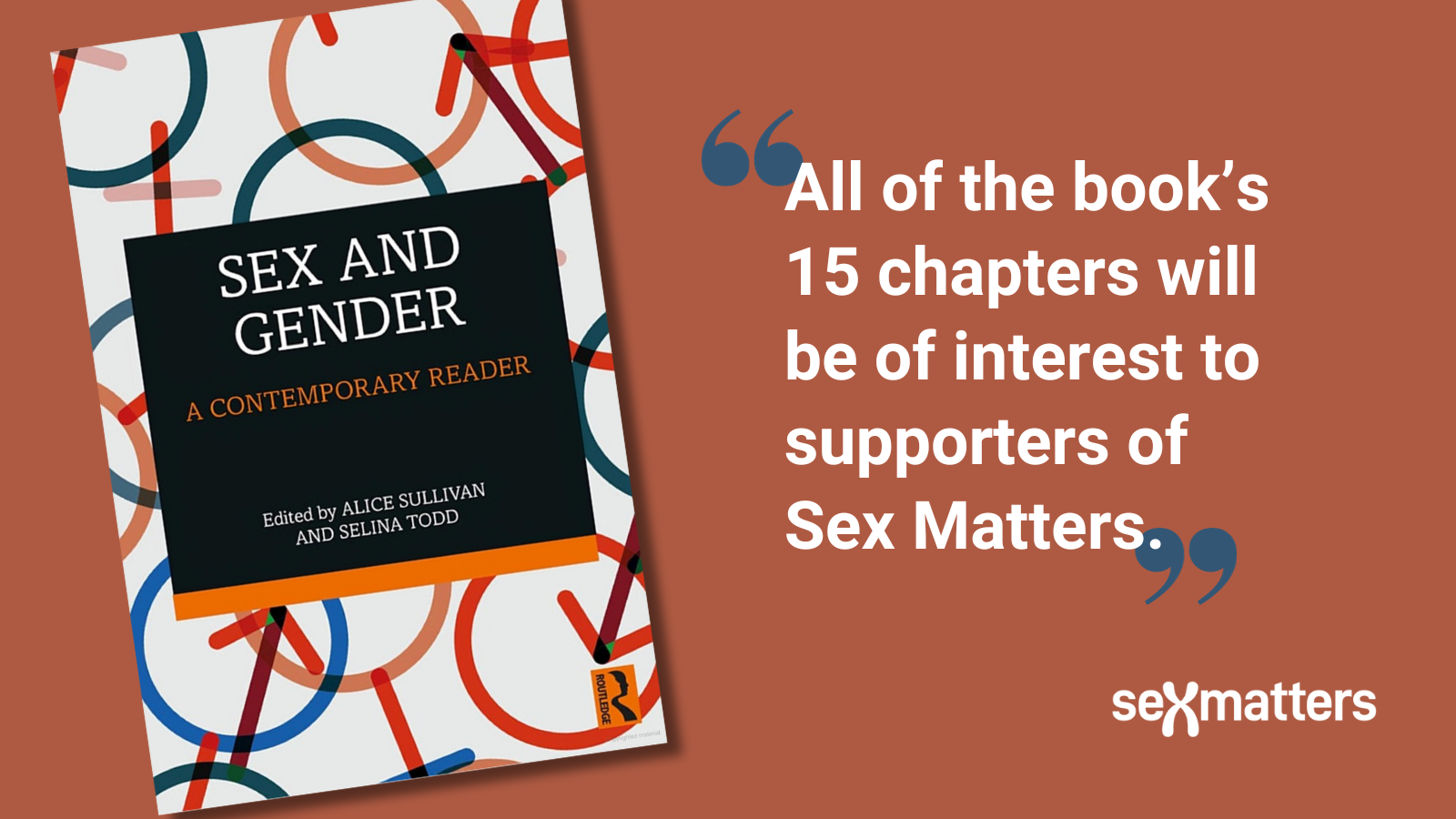Sex and gender: a contemporary reader

Two directors of Sex Matters, Michael Biggs and Emma Hilton, have contributed chapters to Sex and Gender: A Contemporary Reader, an academic book just published by Routledge and edited by Alice Sullivan (who is in Sex Matters’ advisory group) and Selina Todd.
Three further chapters are contributed by members of the Sex Matters advisory group. Alice Sullivan and Lucy Hunter Blackburn (with their co-author Kath Murray) ask “Why do we need data on sex?”; Cathy Devine examines sex, gender identity and sport; and Jo Phoenix considers sex, gender, identity and criminology’. In fact, all of the book’s 15 chapters will be of interest to supporters of Sex Matters.
The technology of puberty suppression

Michael Biggs’s chapter examines the technology of puberty suppression. “Puberty blockers” (gonadotropin-releasing hormone agonists, GnRHa)) have been commonly prescribed to suppress puberty from the age of 12 or younger as a treatment for gender dysphoria.
This chapter investigates the technology of puberty suppression, comprising not just a specific drug but also a discourse that justifies its usage through the promise of a more complete transformation of sexual characteristics.
The chapter examines the origin of puberty blockers in the Netherlands in the 1990s, scrutinising the rationale for this intervention. It then traces the subsequent adoption of this Dutch protocol in the United States and Britain down to the 2010s. It concludes by evaluating recent evidence for the outcomes of puberty suppression.
The phenomenon that is sex

Hilton’s chapter (co-authored with Colin Wright) reviews the biological understandings of the phenomenon that is sex, examining fundamental questions like “What is sex?” and “Why does sex exist?” The chapter begins with a brief tour of the evolution of the binary gamete system on which “female” and “male” are founded and explores some of the diversity of sexed bodies – including pregnant male seahorses and sex-changing clownfish – in the natural world. The chapter reviews current developmental biology knowledge and how sex manifests in humans: “How do we make babies?” and “How do female and male bodies grow?”.
Finally, the chapter critiques emerging ideological misinformation about sex, addressing arguments that unscientifically focus on those people with atypical sex development in order to assert that sex is a fuzzy spectrum or even a mere social construct. Hilton and Wright conclude that such arguments are purely ideological, lacking explanatory power, and ultimately spurious, constructed – to the detriment of scientific trust and integrity – in pursuit of political aims.
For an academic book of almost 300 pages, the paperback is reasonably priced at £35.99 – if you use the 20% discount code EFL03 on the publisher’s website you can get it for £28.79. Or ask your local library to order a copy!
At the moment a few of the chapters can be read for free on Google Books.
